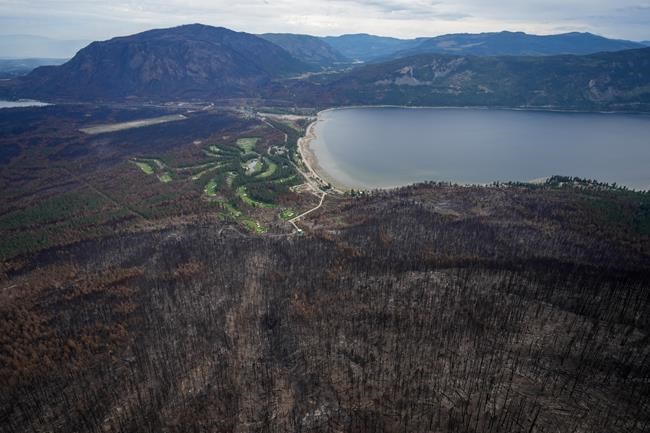VANCOUVER — Wildfire behaviour in British Columbia received a late-summer boost from higher than normal temperatures and lower than normal rainfall, especially in the north, and provincial officials say dry conditions are expected well into the fall.
In an update Wednesday, Neal McLoughlin with the provincial wildfire co-ordination centre cautioned that wildfire season remains in full swing, as he recapped the month of August.
McLoughlin said parts of northern B.C. saw 75 per cent less precipitation than typically seen last month, conditions that have intensified this year's record-breaking wildfire season.
He said the most notable event was a dry cold front that hit the province on Aug. 17, causing extreme fire behaviour, including tornado-like fire wheels and intense growth from the McDougall Creek and Bush Creek East wildfires in the interior.
McLouglin said current drought conditions aren't unexpected in southern B.C., but those in the north are not typical, and dry fuels on forest floors remain "available to burn."
He said most fires in B.C. this year have been caused by lightning strikes, and fall typically sees less lightning activity, coupled with shorter days for fires to actively spread.
"So, what you can expect is most of the fires that we'll see through the months of the fall, if there are new fires, they're likely to be caused by humans," McLoughlin said Wednesday.
Fires that continue to burn in the north, meanwhile, are expected to burn through the fall and winter, some of which may "pop back up" next spring, he said.
"Fuels remain critically dry, and temperatures that are above normal, precipitation amounts that are below normal, are not helping," he said. "And so we can expect similar conditions we've had through the summer to persist through the fall."
Emergency Management Minister Bowinn Ma told Wednesday's briefing in Vancouver that as the province approaches the "tail end" of wildfire season, 1,200 people remain on evacuation order, with 34,000 still on alert.
She said she was pleased people were slowly returning to their communities, but "the fires we experienced this year are having a lasting, significant affect on people and communities."
Elsewhere in B.C., residents south of Kamloops saw all evacuation orders and alerts related to a nearby fire end, with the Thompson-Nicola Regional District issuing the "all clear" to residents affected by the Ross Moore Lake fire.
That blaze was sparked by lightning nine weeks ago and scorched nearly 114 square kilometres before being held.
The B.C. Wildfire Service said an area restriction order covering travel through the fire zone remains in effect until at least Friday.
Recent cooler weather in the Squamish-Lillooet Regional District saw all orders and alerts rescinded for the 110-square-kilometre Casper Creek blaze, sparked by lightning on July 11.
The fire had threatened the communities of Seton Portage and Shalath, west of Lillooet, before being brought under control.
Other evacuation orders are still posted in another region west of Lillooet, where the out-of-control, 93-square-kilometre Downton Lake fire destroyed numerous homes and cabins around Gun Lake and has burned to the edge of the South Chilcotin Mountains Provincial Park.
The regional district said Wednesday that 43 properties had structures destroyed, with 11 more damaged by the fires. The district did not specify if the buildings destroyed were homes or outbuildings.
Residents with properties formerly under evacuation order are now allowed to return but the regional district urged caution for those re-entering their areas.
“Even though the threat of wildfire may have subsided, there are still hazards in the area,” board chair Jen Ford said.
The wildfire service said large fires such as the Ross Moore and Downton blazes will continue to smoulder until there is significant rain or snowfall, but no new wildfires have been sparked in the last day and the number of active blazes has fallen below 400.
This report by The Canadian Press was first published Sept. 13, 2023.
Darryl Greer, The Canadian Press




